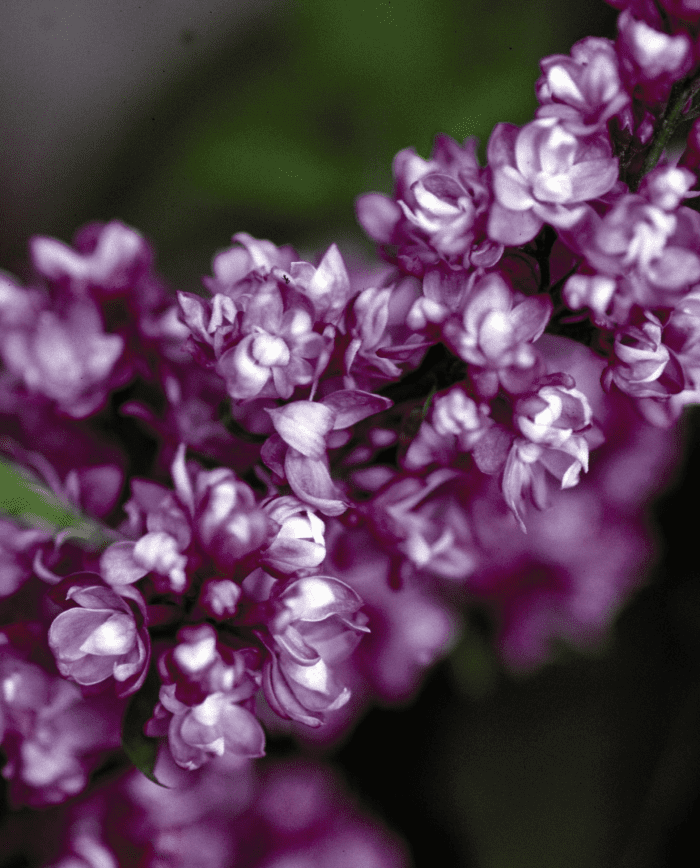Riverdene Garden Center
Charles Joly French Lilac
Charles Joly French Lilac
Couldn't load pickup availability
Syringa vulgaris ‘Charles Joly’
Charles Joly French Lilac is a classic, heirloom lilac variety known for its deep magenta-purple, double flowers and intense fragrance. It is a cold-hardy (Zone 3-7), long-lived, and disease-resistant shrub, making it a perfect choice for hedges, mixed borders, and specimen plantings in Southwest Saskatchewan. This lilac blooms in mid-to-late spring, attracting pollinators and adding vibrant color to landscapes.
Planting & Location
- Hardiness Zone: 3-7 (thrives in cold prairie winters)
- Mature Size: 10-12 feet tall, 6-8 feet wide
- Growth Rate: Moderate (12-24 inches per year)
- Sunlight Needs: Full sun (at least 6+ hours of direct sunlight for best flowering)
-
Soil Preference:
- Prefers well-drained, loamy soil.
- Tolerates clay, sandy, and alkaline soils.
- Avoid wet or compacted soil—lilacs do not tolerate soggy roots.
- Spacing: 6-8 feet apart for a hedge, 8+ feet apart for individual plantings.
Watering
- Young Plants (First 1-2 Years): Water deeply once per week to establish roots.
- Established Shrubs: Drought-tolerant; water every 2-3 weeks in dry periods.
- Avoid Overwatering: Lilacs prefer moderate soil moisture but do not tolerate standing water.
Fertilizing
- First Year: No fertilizer needed—focus on root establishment.
-
Mature Shrubs:
- Apply a low-nitrogen, phosphorus-rich fertilizer (e.g., 5-10-10) in early spring to encourage flowering.
- Organic alternative: Compost or well-rotted manure in spring.
- Avoid excessive nitrogen, as it promotes leafy growth over blooms.
Pruning & Maintenance
- Best Time to Prune: Immediately after flowering (late spring to early summer).
-
How to Prune:
- Remove spent flower clusters to encourage more blooms next year.
- Trim dead, diseased, or crossing branches to maintain airflow and health.
- Avoid heavy pruning, as lilacs bloom on old wood.
Flowering & Fragrance
- Bloom Time: Mid to late spring (May-June)
- Flower Color: Deep magenta-purple, double blossoms
- Fragrance: Strong, sweet, classic lilac scent
- Attracts: Bees, butterflies, and hummingbirds
Pest & Disease Management
Resistant to: Powdery mildew and bacterial blight (common lilac diseases).
Common Pests:
-
Lilac Borers – Cause wilting branches.
- Solution: Keep plants healthy and prune out affected wood.
-
Aphids – Can cause curled leaves and sticky honeydew.
- Solution: Spray with insecticidal soap or introduce ladybugs.
Common Diseases:
-
Leaf Spot (Fungal or Bacterial) – Causes brown leaf spots.
- Solution: Improve airflow and remove infected leaves.
-
Root Rot (Phytophthora) – A risk in wet soils.
- Solution: Ensure well-draining soil and avoid overwatering.
Winter Protection
- Highly winter-hardy—no special protection needed.
- Mulching: Apply 2-4 inches of mulch around the base (not touching the stems) to insulate roots.
- Deer & Rabbits: Generally resistant, but young plants may need protection.
Landscape Uses
Great for hedges, screens, and specimen plantings
Rich, deep purple flowers make a bold statement
Highly fragrant, perfect near patios and walkways
Cold-hardy and resistant to common lilac diseases
Attracts pollinators like bees and butterflies
Additional Notes:
- Charles Joly Lilac is one of the best purple-flowering French lilacs, prized for its deep color, fragrance, and long-lasting blooms.
- Lifespan: 50+ years with proper care.
- Works well in formal gardens, cottage landscapes, and mixed borders.
Photo courtesy of Jeffries Nurseries
Share


